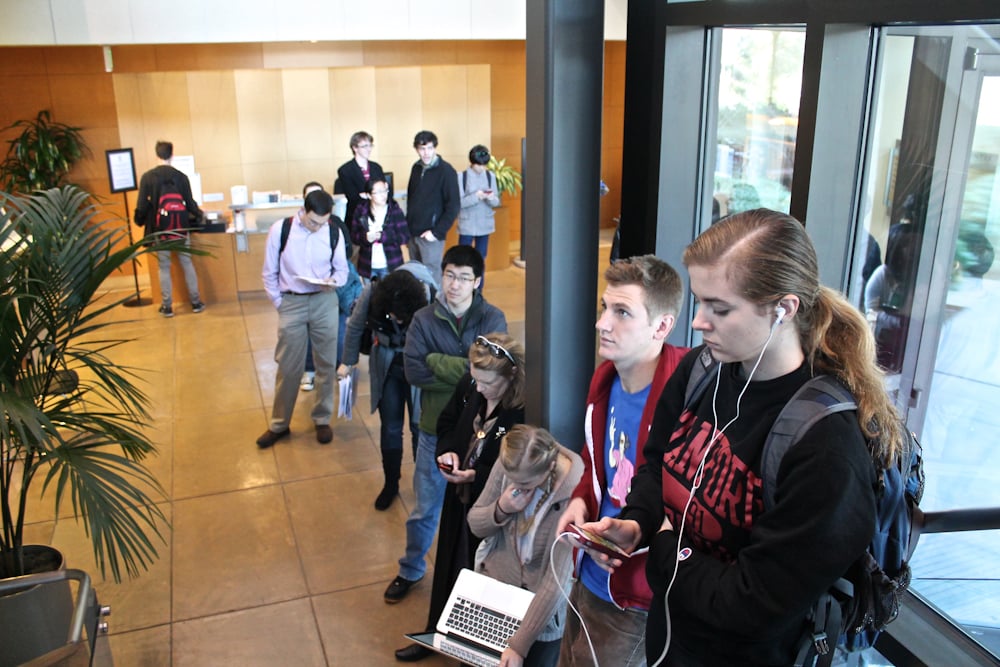The latest increase in the cost of Cardinal Care — and the University’s refusal to delay a waiver deadline that would preclude students from using California’s new health insurance exchange to find cheaper insurance — was met with discontent among graduate and international students while also prompting efforts on their part to mitigate the burden.
The cost of Cardinal Care for this academic year totals $3,968, an increase of 9.3 percent from last year. The University-offered health insurance is more expensive than similar programs at peer institutions — Harvard, Yale and the University of California, Berkeley, charge $3,148, $2,040 and $2,772 ($2,014 for undergraduates) respectively — and requires students to pay annually rather than by semester.
The University’s Sept. 15 waiver deadline for Cardinal Care preceded the introduction of California’s health insurance exchange — a result of the Affordable Care Act — on October 1, with the restriction of choice additionally detrimental to older graduate students who are ineligible to stay on their parents’ plan under the new legislation.
“It doesn’t add up…70 percent of the students on Cardinal Care are graduate students,” said Leslie-Bernard Joseph J.D. ’15, who reached out to University administrators in August over the issue but said that he remained unsatisfied. “Some of them are subsidized by the department they’re working for, but it sounds like grad students are soliciting significantly more of the bill.”
According to Leigh Stacy, associate director of Vaden Health Center, roughly 8,200 students — or over half the student body — are enrolled in Cardinal Care as of the beginning of this month, a number that has remained fairly consistent over the past three years. Stacy cited recent health care reform as one factor behind increased Cardinal Care costs.
“The mandates dictated by reform, captured under legislation entitled The Patient Protection and Affordable Care Act (PPACA), are complex,” Stacy wrote in a statement to The Daily. “Although PPACA implies cost savings, in reality many of the mandated changes have imposed new costs. This is not surprising when you consider that the goal of reform includes extending health insurance to many people who did not previously have it and improving access to care.”
A petition drafted by Adam Sieff J.D. ’14 and circulated through the graduate student community calls on the University to either offer Cardinal Care as a month-to-month plan that students could opt out of after they obtain coverage through the exchanges, offer alternative cost/coverage Cardinal Care bundles or delay the opt-out deadline so that students don’t have to provide proof of insurance until after the exchanges open.
“Professional school students…are the most seriously affected,” Sieff wrote in a statement to The Daily. “In the law school alone, I’d say that’s about 20-30 percent (or 100-150) of students, but it could easily be more. Universitywide I expect it’s a not-insignificant figure.”
By Sept. 3 Sieff’s petition collected 112 signatures.
The increased cost of Cardinal Care also sparked dissatisfaction among international students, who face an additional complex waver system if they want to opt out of Cardinal Care.
“International students are being sleepwalked, given no primer or anything about what health care looks like [in] the US,” said ASSU Senator Ilya Mouzykantskii ’16. “When I first came here, I had no idea that I could take a different health care [option]. I just assumed that it was something attached to our tuition.”
While Stacy said that Vaden has no plans to change insurance policies for this school year, she noted that an effort to “actively seek feedback from students about ways in which they can mitigate some of the expenses associated with health care coverage” began in late spring and will continue this fall, with focus groups, workshops and a campus-wide survey.
For now, students have collaborated to spread awareness about Cardinal Care’s drawbacks and have shared resources to find alternative health care plans.
“I posted [my research and resources] on the law student Facebook group, and later got a bunch of emails saying, ‘Thanks, I saved a bunch of money,’” Joseph noted.
“I hope we can inform students so that they can make meaningful choices and navigate a tricky situation,” Sieff said. “Student health insurance shouldn’t be a black box or a money trap.”
